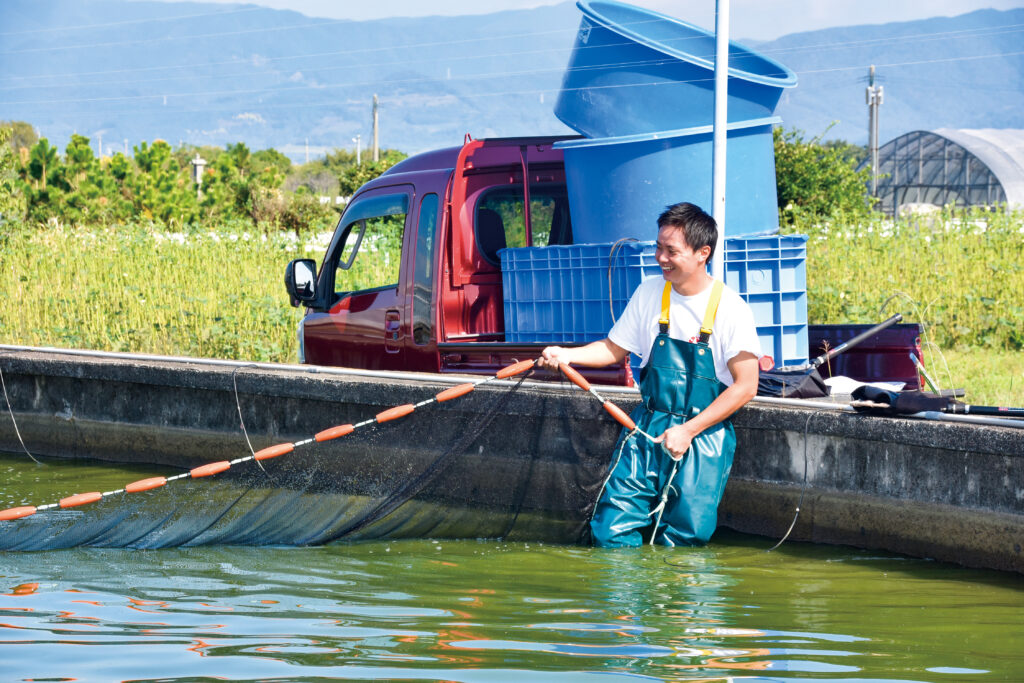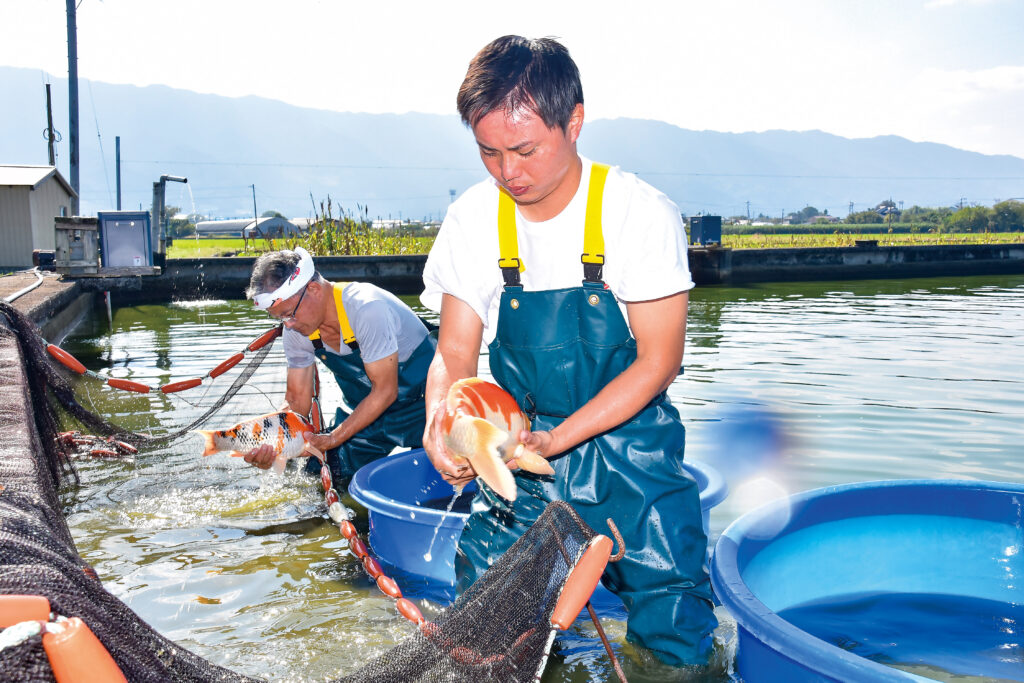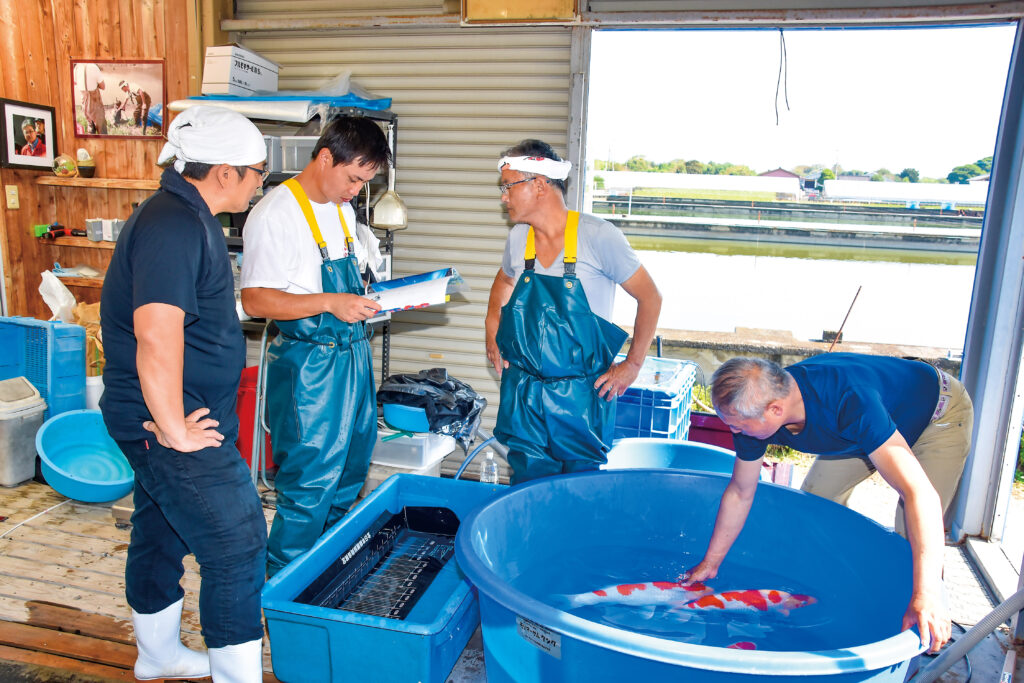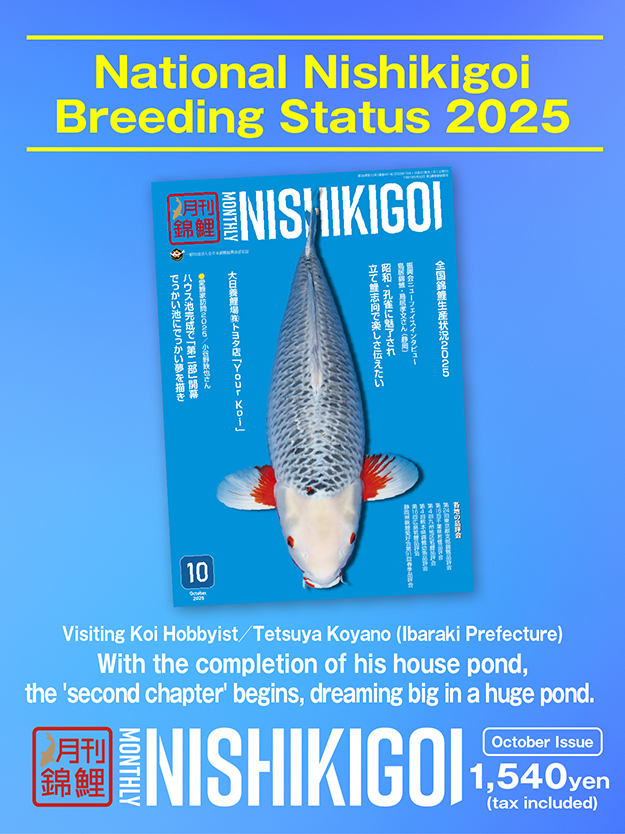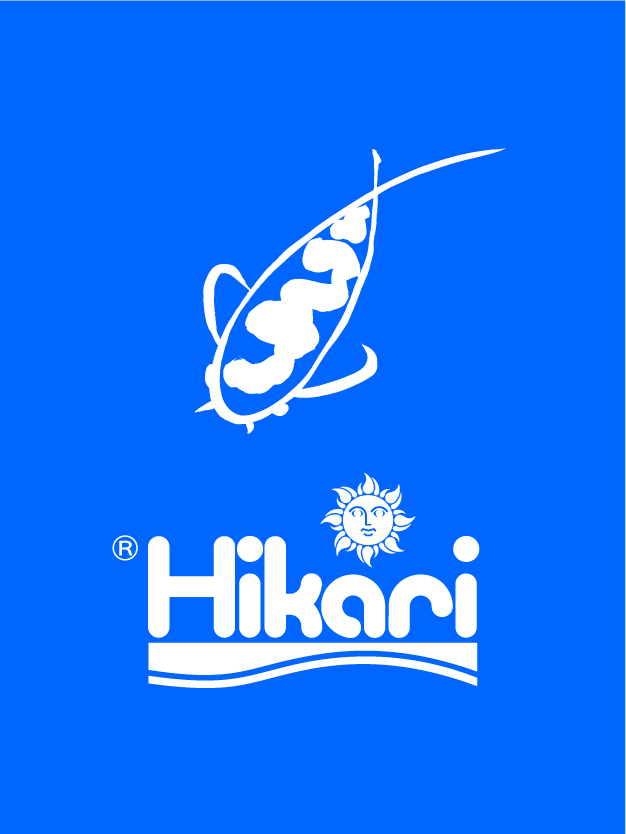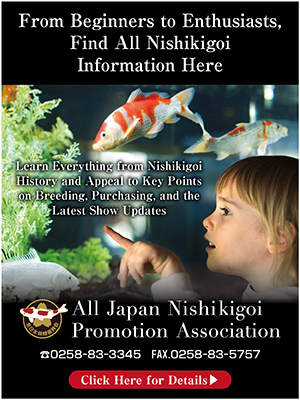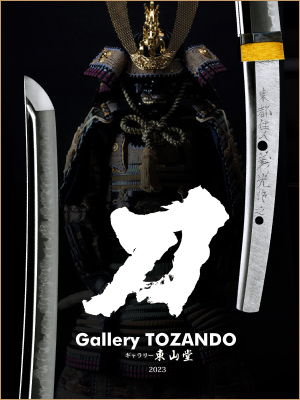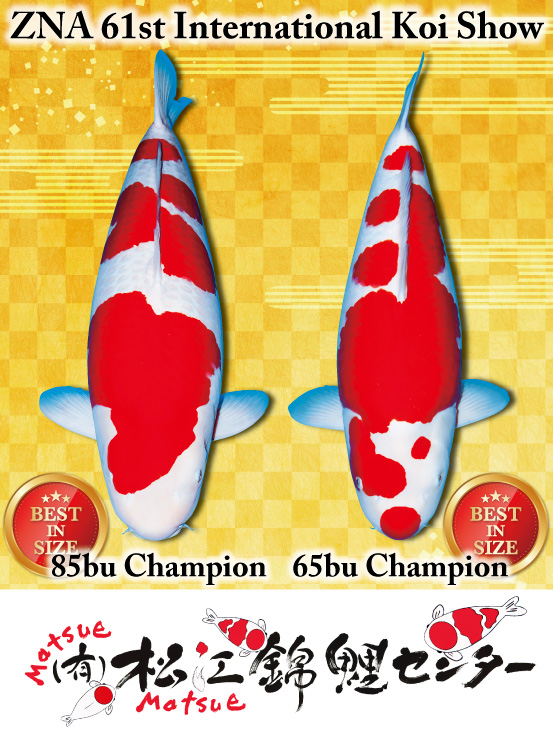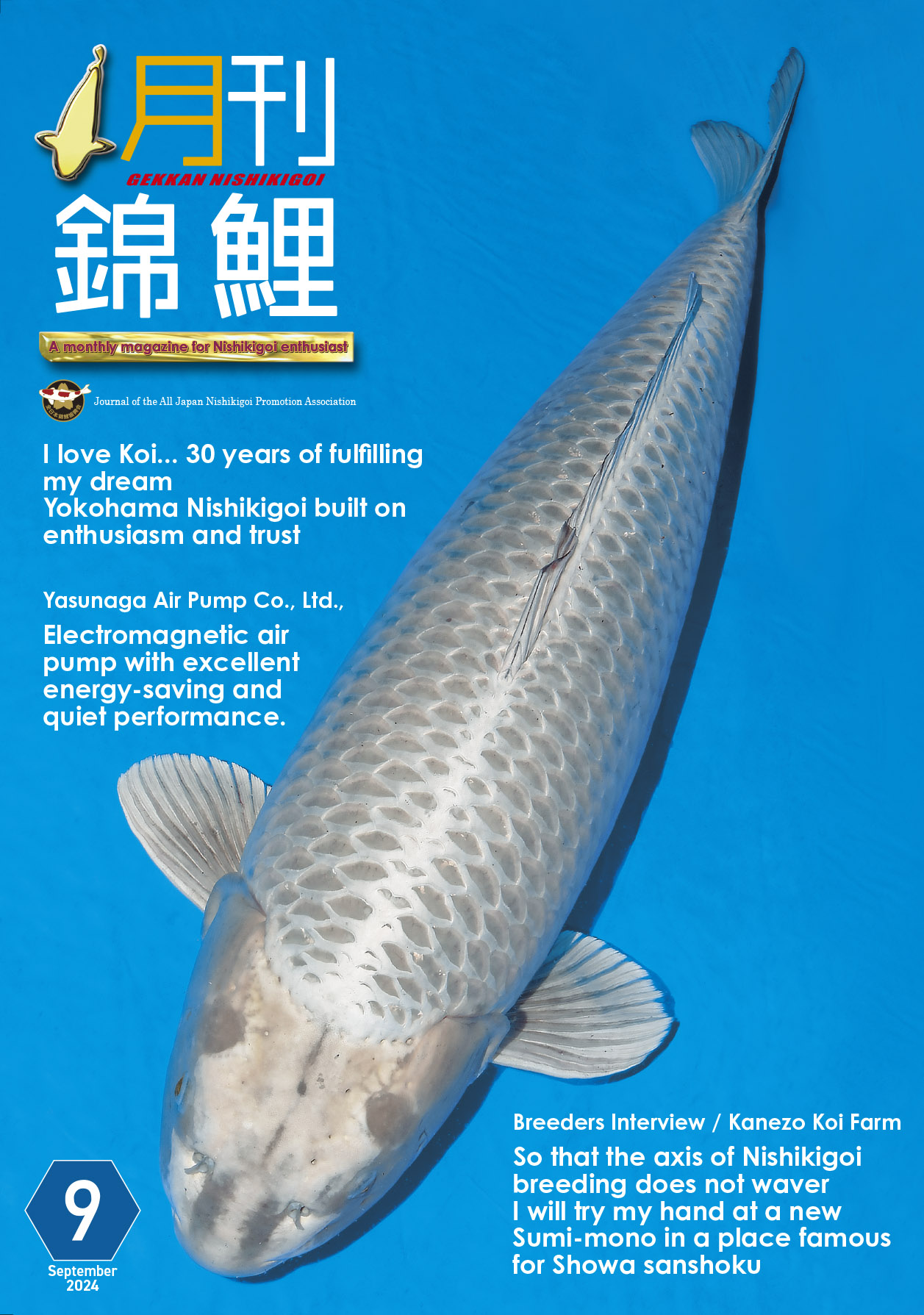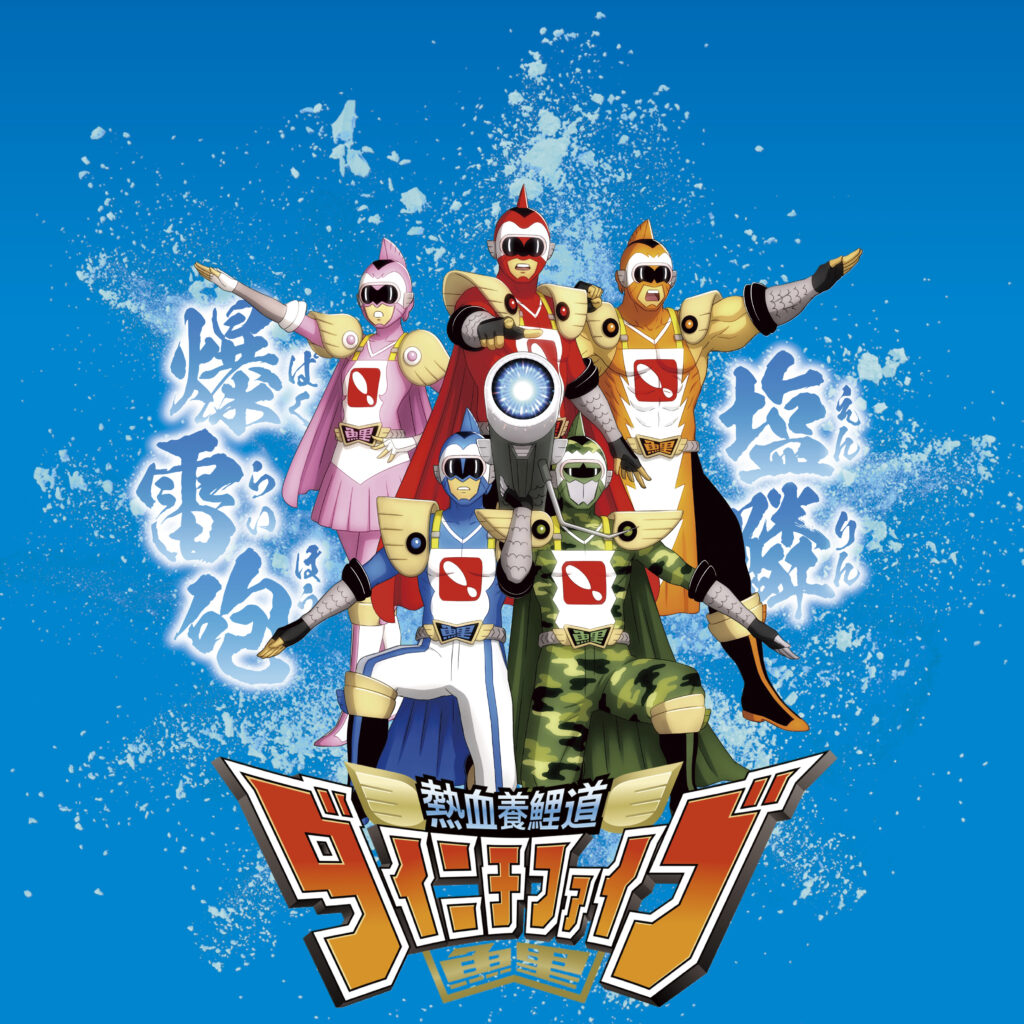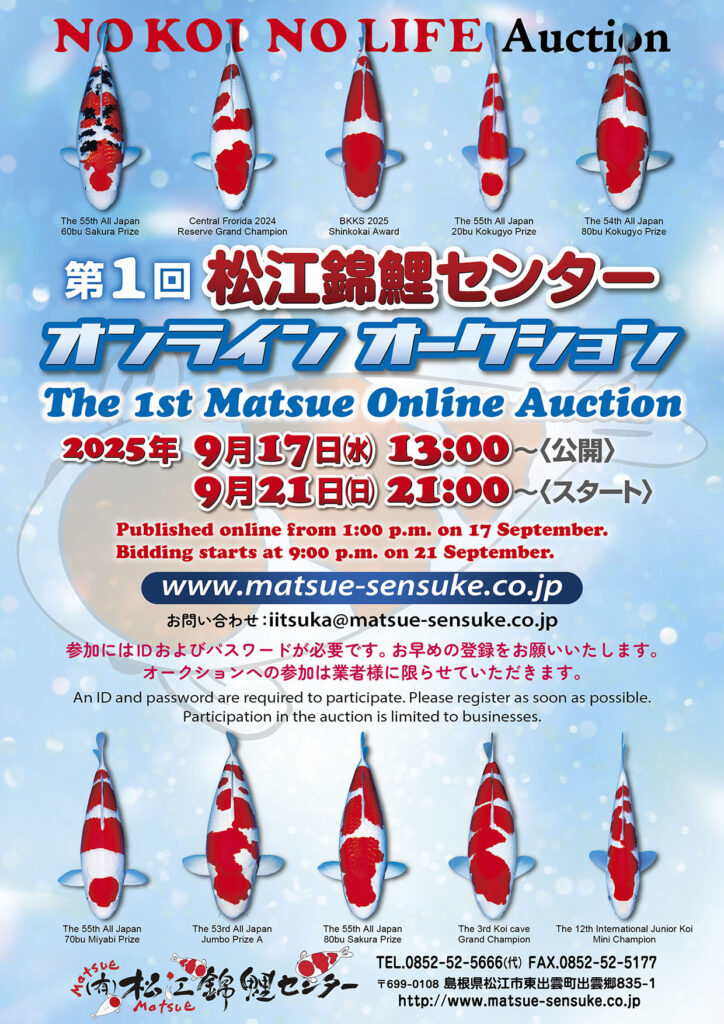— How big can the largest koi grow?
Eiji: There are some that reach 90 cm. Exceeding 90 cm is still quite challenging, as there are many shortcomings in terms of technology and environment. We need to keep working hard in the future.
— What kind of koi are you aiming to produce?
Kenji: We want koi that are unmistakably from Maruchiku. The most important thing is quality—the Kohaku quality must be excellent. The pattern doesn’t have to be perfect. For example, the Kohaku that won the grand champion at the recent Kyushu show didn’t have a great pattern, but sometimes a too-perfect pattern can feel like it’s missing something. I prefer to create koi that win with quality rather than pattern. That Kohaku truly embodies the Maruchiku style. We want to produce koi that other shops don’t have.
— Has the success of Kohaku overshadowed the performance of Showa?
Eiji: We have long used a female Showa from the Sakai line, paired with a male from Mr. Migita’s Kinpozan brand. At the 29th Kyushu convention, when our Kohaku won the grand champion, a Showa also won the grand champion in the 85-bu category (picture ③). Its sibling is now our main male parent.
— There are many different lines of Showa. Does Mr. Migita’s Showa match well with yours?
Eiji: The year that 85-bu champion Showa was born was very lucky. Now, at four years old, it has exceeded 80 cm without any heating. Although the sumi haven’t fully developed yet, its head shape and body are outstanding. Unfortunately, it passed away the summer after the show, when the sumi on its head had just settled. It was such a pity.
Kenji: We were really devastated when that fish died. Initially, we weren’t specifically looking for Mr. Migita’s fish. I happened to find it at a client’s place and thought it would be interesting to use as a parent fish. Later, I found out it was a fish produced by Mr. Migita. In the first year, only two survived, and we thought it might not work, so we didn’t try again the next year. But looking at that fish, I still thought it was good (laughs), so we changed the male fish and tried again, and it succeeded. However, the following year, it didn’t work out. It was just a lucky year.
Eiji: In terms of quantity, this year is a bit low, but last year was good. The Showa made up for the lack of hi (red) in the Kohaku.
— Did you also work on Kawarimono before?
Eiji: Yes, we used to produce some Kawarimono every year for fun, but now we don’t have as much free time (laughs). So, in the past two years, we’ve focused on the “Go-sanke”.
(To be continued in the part 2.)

